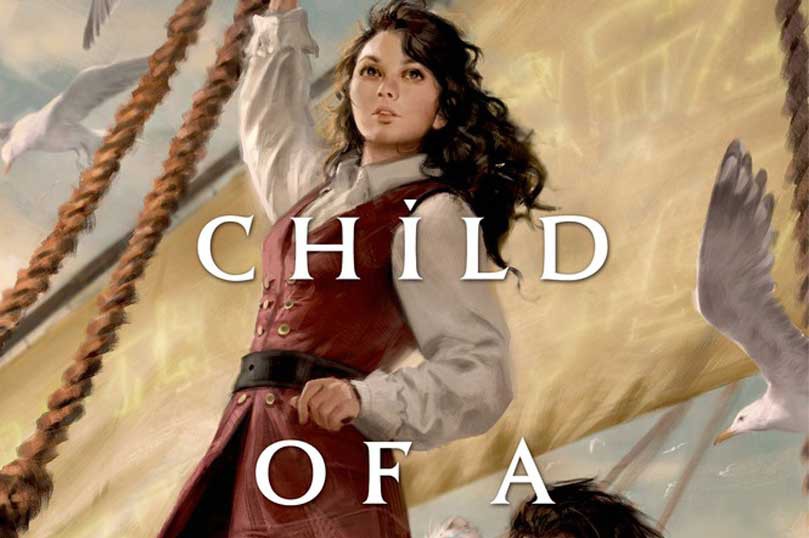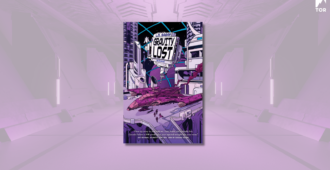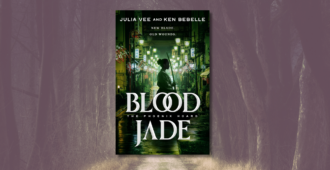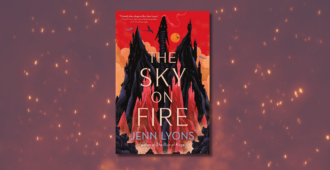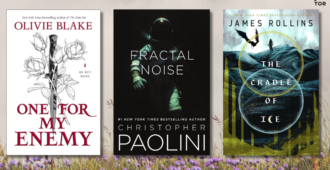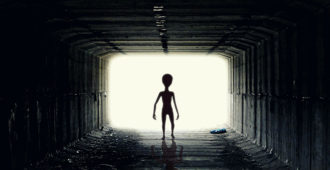Welcome back to Fantasy Firsts. Our program continues with a guest post from Child of a Hidden Sea author A. M. Dellamonica, who advocates for pirates over zombies.
Enough With Zombies! Bring on the Pirate Apocalypse!
Written by A. M. Dellamonica
The first time I saw the Global Warming Coffee Mug, it was at the American Museum of Natural History. The mug is a commonly-found gift store item in science-y tourist attractions: aquariums, Biodiversity Centers, science museums. The idea is that you pour hot fluids into the mug, and its heat-reactive plastic artwork changes color, transforming alarming chunks of the planet’s land mass into ocean.
It’s dramatic. South America gets to looking especially moth eaten. Were you fond of Buenos Aires? Too bad! Want to visit the Amazon basin? Don’t wait until you retire.
My primary feeling, though, the first time I saw the mug, was relief. I could still recognize everything. Sure, habitats of millions of animals, plants and people vanished. But I could take comfort in the shape of the continents, in what remained.
Yes, I am appallingly Bad at Maps. Also, like many writers, I tend to imagine disasters in the starkest terms possible. Don’t get me wrong—that coffee-heated map is dire. But I could still find Saskatchewan on the mug. So… win?
In Child of a Hidden Sea, a marine videographer named Sophie winds up on a world, possibly Earth, where the continents aren’t recognizable. Almost all the land is gone; only the moon is familiar. Is Stormwrack a parallel world? A future one? If the latter, is the catastrophic whatever that rearranged the world’s geography going to happen to us? And how soon?
Though Stormwrack is an imaginary worst-case scenario for a real world problem, it isn’t scientifically realistic. According to Echopraxia author Peter Watts, the only way to transform the map of present day earth to the tiny Galapagos-like archipelagos of Stormwrack would be to flood the planet with the water ice from multiple comet strikes.
Or, alternately, a magical cataclysm. Luckily I’m better able to imagine those than I am at looking at Google Earth and envisioning a six meter ocean rise.
The good news, for Sophie and for Stormwrack anyway, is that whatever it was that made this world what it is, it took place millennia ago. Human beings survived. We’re flourishing on those little islands in the Nine Seas—there are 250 separate island nations, in fact, each with its own culture, form of government, and ecosystem. Each practices a form of magic, called inscription, which depends on the wildlife within their microclimate. Tiny variations between plant and animal species can yield great differences in the kind of magic practiced: the feathers of a blue penguin from Ylle, for example, might create a spell that’ll save a person from eighty-below weather. An almost identical penguin that nests on Murdocco, meanwhile, might be good for inscribing weather seers, people who predict those same cold snaps.
Stormwrack is a pretty fun place. When Sophie arrives, it’s enjoying an unprecedented period of peace, the Cessation of Hostilities, that dates back to an international effort to stamp out piracy in the Nine Seas. The unified front against bandits was so successful that the five pirate nations were forced to go legit, and join the United Nations-type organization created with their destruction in mind. But you can’t keep a pirate down forever, and the Isle of Gold is looking for revenge. Soon Sophie has cutthroats at her door, and problems far more pressing than some little matter of ocean rise here on Earth.
Which, you know, don’t we all?
Buy Child of a Hidden Sea here:
opens in a new window opens in a new window
opens in a new window opens in a new window
opens in a new window opens in a new window
opens in a new window opens in a new window
opens in a new window opens in a new window
opens in a new window
Don’t forget to follow A. M. Dellamonica on Twitter (@AlyxDellamonica ) or visit her website.
(This is a rerun of a post that originally ran on June 16, 2014.)

